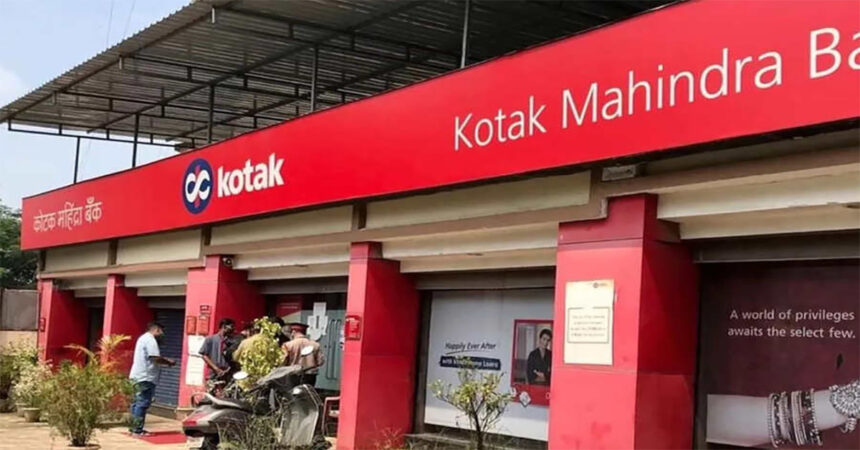A 20-year-old unemployed man from Greater Noida experienced the shock of his lifetime when he discovered an astronomical sum exceeding ₹1 septillion trillion credited to his deceased mother’s Kotak Mahindra Bank account. The Noida man septillion bank account incident, which involved a mind-boggling 37-digit amount of ₹10,01,35,60,00,00,00,00,00,01,00,23,56,00,00,00,00,299, briefly made Deepak one of the wealthiest individuals on paper before the truth emerged.
This extraordinary case of digital banking malfunction has raised serious questions about the reliability of modern financial systems and the security protocols governing third-party applications in India’s rapidly expanding digital payment ecosystem.
Read More : Trump tariffs on India Crushing $87 Billion Export Economy
The Mysterious Origin of the Noida Man Septillion Bank Account Balance
Initial Discovery and Shock
The story began on August 3, 2025, when Deepak, whose mother Gayatri Devi had passed away two months earlier, received a notification on his mobile device indicating a massive credit to her bank account. The young man, who had been operating his late mother’s account following her death, was stunned to discover the incomprehensible figure displayed on his banking application.
According to reports, Deepak was switching to a new mobile phone and reinstalling his applications when he opened the NAVI UPI app and witnessed the astronomical balance. The sheer magnitude of the number was so overwhelming that he immediately shared screenshots with friends, asking them to help count the zeros and verify the amount.
Read More : Legendary Tribal Leader Shibu Soren, JMM Founder and Former Jharkhand CM, Passes Away at 81
The Technical Glitch Behind the Septillion Sum
Investigation by local authorities revealed that the Noida man septillion bank account error was caused by a technical glitch in the NAVI UPI application, not an actual credit from Kotak Mahindra Bank. The Dankaur Police Station confirmed that the astronomical display was the result of a software bug that only appeared within the third-party UPI app interface.
When Deepak attempted to access his account through other applications like PhonePe, the balance correctly showed zero, confirming that no actual money existed in the account. An official bank statement obtained via email also verified that the account contained no funds, exposing the display error as purely superficial.
Read More : Meet the All-New 2026 BMW F 450 GS: Bold Design, Full Specs & Adventure-Ready Power

How UPI App Glitches Create False Banking Displays
Understanding Third-Party UPI Application Vulnerabilities
The Noida man septillion bank account incident highlights critical vulnerabilities in India’s digital payment infrastructure. UPI applications connect to banks through Application Programming Interfaces (APIs) provided by the National Payments Corporation of India (NPCI). When customers install third-party UPI apps, they link bank accounts by verifying mobile numbers and setting UPI PINs, creating potential points of failure in the system.
These applications often cache balance responses to reduce API requests and improve performance. However, when technical glitches occur in this caching system or during API communications between the app and banking servers, erroneous displays can emerge, as demonstrated in the septillion credit case.
Read More : Trump’s Statement on India’s “Dead Economy”: Understanding the Context and Implications
Banking System Architecture and Error Propagation
Modern banking systems rely on complex networks of interconnected applications and services. The UPI ecosystem involves multiple layers including customer apps, Payment Service Providers (PSPs), NPCI’s central switch, and individual banks’ core systems. Each transaction or balance inquiry passes through these multiple touchpoints, creating opportunities for data corruption or display errors.
In Deepak’s case, the NAVI UPI app’s interface experienced a computational error that resulted in the display of an impossibly large number. This type of glitch typically occurs when numerical overflow errors affect display algorithms, causing systems to show astronomical figures instead of proper error messages.
Read More: Shah Rukh Khan’s Historic National Film Award and Full Winners’ List
Kotak Mahindra Bank’s Response and Denial
Official Bank Statement
Kotak Mahindra Bank categorically denied the viral reports about the Noida man septillion bank account incident. In an official statement, the bank declared: “Media reports suggesting an unusually large balance in a customer’s account are incorrect. In light of these reports, we encourage customers to check their account details using Kotak’s mobile banking app or net banking platforms. Kotak Mahindra Bank confirms that our systems are functioning normally, with all services secure and fully operational”.
The bank emphasized that its internal systems showed no record of such a transaction or balance, effectively distancing itself from the third-party application error. This response highlights the complexity of modern banking ecosystems where multiple service providers interact with core banking systems.
Account Freezing and Investigation Process
Despite the bank’s denial, the account was reportedly frozen as a precautionary measure while authorities investigated the matter. The Income Tax Department launched an inquiry to determine whether the incident represented a technical glitch, system error, or potential money laundering case.
Local police confirmed that the investigation revealed no actual monetary transaction had occurred, and the display was purely a technical malfunction within the NAVI UPI application. This finding supported the bank’s position that its systems remained secure and uncompromised throughout the incident.
Read More : Hindu Terrorism Debate: Examining Amit Shah’s Statement
Impact on Digital Banking Security Perceptions
Public Reaction and Social Media Response
The Noida man septillion bank account story went viral across social media platforms, generating widespread curiosity and disbelief. Users joked about the young man becoming “richer than Ambani” and questioned the security of digital banking systems. Some observers correctly identified the incident as a probable technical glitch, while others speculated about potential fraud or system manipulation.
The incident sparked conversations about the reliability of third-party financial applications and the need for better error handling in digital banking interfaces. Many users expressed concern about the potential for similar glitches to affect their own accounts, highlighting the importance of robust system design in financial technology.
Read More : Blockbuster Bonanza: Must-Watch Movies Releasing in India, August 2025
Broader Implications for Fintech Security
This case exemplifies the challenges facing India’s rapidly expanding digital payment ecosystem. With over 13.4 billion UPI transactions processed monthly, the system’s reliability becomes increasingly critical for maintaining public confidence. Technical glitches like the one affecting Deepak’s account display can undermine trust in digital banking platforms and highlight the need for improved quality assurance protocols.
The incident also demonstrates the importance of proper error handling and validation mechanisms in third-party applications that interface with banking systems. As financial technology continues to evolve, ensuring accurate data display and preventing such dramatic computational errors becomes essential for maintaining system integrity.
Read More : The Safest Family Vehicle for 2025
Lessons Learned from the Astronomical Banking Error : Noida Man Septillion Bank Account
Technical Safeguards and Prevention Measures : Noida Man Septillion Bank Account
The Noida man septillion bank account incident reveals several areas where digital banking systems can be improved. First, third-party applications should implement better validation checks to prevent the display of impossible numerical values. When balance inquiries fail or return corrupted data, applications should display appropriate error messages rather than astronomical figures.
Banks and UPI service providers should also establish more robust communication protocols between their systems and third-party applications. Regular monitoring and validation of API responses can help identify and prevent similar display errors before they reach end users.
Consumer Protection and Awareness : Noida Man Septillion Bank Account
This case underscores the importance of financial literacy and consumer awareness regarding digital banking systems. Users should understand that third-party applications may sometimes display incorrect information and should verify important transactions through official banking channels.
Financial institutions should also improve their customer communication strategies to quickly address viral incidents and provide accurate information to prevent panic or confusion. Clear explanations of how different applications interact with banking systems can help consumers better understand and identify potential technical issues.
The Noida man septillion bank account story serves as a compelling reminder of both the power and the vulnerabilities inherent in modern digital banking systems. While the incident ultimately proved to be a harmless technical glitch, it highlighted important questions about system reliability, error handling, and the complex relationships between banks and third-party service providers in India’s digital payment ecosystem.
As the country continues to embrace digital financial services, ensuring robust technical safeguards and clear communication protocols becomes increasingly critical for maintaining public trust and system stability. The astronomical numbers that briefly appeared in Deepak’s account may have been fictional, but the lessons learned from this incident are very real and valuable for the future of digital banking security.
External Resources:








